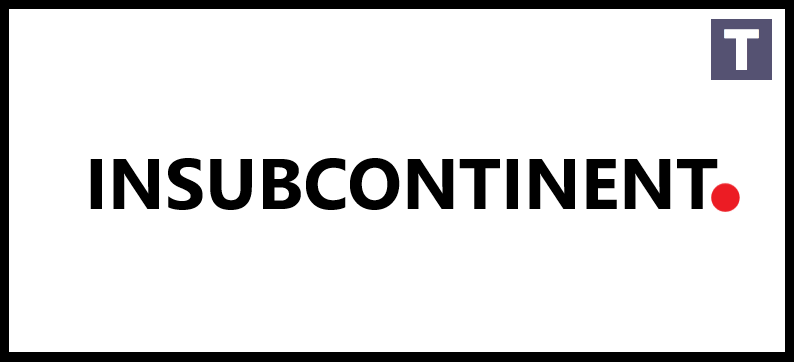Music
Trailers
DailyVideos
India
Pakistan
Afghanistan
Bangladesh
Srilanka
Nepal
Thailand
Iraq
Iran
Russia
Brazil
StockMarket
Business
CryptoCurrency
Technology
Startup
Trending Videos
Coupons
Football
Search
Download App in Playstore
Download App
Best Collections
Technology

Smart rings are still a relatively young category in the wearable hardware world, but the Oura Ring seems to be a standout in terms of early success. The Oura Ring hardware is sleek and packed with sensors, allowing it to measure a usersleep patterns, take your body temperature and track activity, and now Oura has raised $28 million in Series B funding to bring on new key hires and product updates.
In a Medium post announcing the raise, Oura CEO Harpreet Singh Rai revealed that to date, the company has sold over 150,000 of its rings since launch (which was in early 2018) and that its team has grown to over 100 people globally. The Series B funding comes from Forerunner Ventures, which has a strong track record when it comes to direct-to-consumer product company investments, as well as from Gradient Ventures and Square.
Along with the investment, Oura gains two new board members, and one new board observer all with expertise in different aspects of the startupbusiness: ForerunnerEurie Kim and Squarehardware lead Jesse Dorogusker are the new board members, and Gradient partner (and former VP of engineering at Google) Anna Patterson joins as the observer.
Oura will be revamping its website and adding a new web-based portal for Oura Ring users that offers &actionable insights,& the company says, and itgoing to be doing more in terms of collaborating with academic researchers on ensuring its products measurements and guidance remain as accurate and useful as possible.
Oura prioritizes the role of sleep in terms of its contribution to health, and has also recently ventured into the realm of meditation, but it acts as a general fitness tracking device as well. It has attracted a number of fans among the plugged-in tech elite, too, including Twitter and Square CEO Jack Dorsey. The company deserves kudos for delivering a solid, attractive and feature-rich gadget in a category that seemed like a tough sell in the early offing, and this new funding is a good vote of confidence.
- Details
- Category: Technology Today
Read more: Oura raises $28 million for its health and sleep tracking ring
Write comment (91 Comments)AMC this morning formally announced that it will close all locations in the United States for between six to 12 weeks, beginning today. The move comes on the heels of a partial shutdown by the largest theater chain in the U.S. last week and a similar announcement for competitor Regal last night. Regalannouncement was a less specific &until further notice.&
AMC currently operates 661 theaters in the States, comprising more than 8,000 screens. The move is major, but not unexpected, as people and companies deal with the realities of living through a pandemic.
Movie attendance has already begun dropping shortly as people have begun to practice social distancing. AMC and other events companies have had to grapple with both concerns over employee and attendee safety, as well as an increasing push on the part of cities and States to close down business and require citizens to stay home in order to curb the spread of COVID-19.
As it notes in a press release issued today, more than a states and cities have mandated such closures over the last few days. As part of the closure, the chain will pause payments on its A-List memberships during the months-long shut down. No word yet on whether the massive chain has a plan in place to support employees during the closure. We&ve reached out to the company for additional comment.
&We are ever so disappointed for our moviegoing guests and for our employee teams that the new CDC guidelines that Americans should not gather in groups larger than 10 people make it impossible to open our theatres,& CEO Adam Aron said in a release. &Still, the health and wellbeing of AMC guests and employees, and of all Americans, takes precedence above all else. We will continue to monitor this situation very closely and look forward to the day we can again delight moviegoers nationwide by reopening AMC movie theatres in accordance with guidance from the CDC and local health authorities.&
Meantime, the company is encourage housebound movie buffs to use its on demand service. Recently, NBCUniversal announced plans to offer new releases on-demand. Others will likely follow suit in the wake of these major closures.

- Details
- Category: Technology Today
Read more: AMC will close all US theaters for six to 12 weeks
Write comment (92 Comments)
By now we know that Kubernetes is a wildly popular container management platform, but if you want to use it, you pretty much have to choose between having someone manage it for you or building it yourself. Spectro Cloud emerged from stealth today with a $7.5 million investment to give you a third choice that falls somewhere in the middle.
The funding was led by Sierra Ventures with participation from Boldstart Ventures.
Ed Sim, founder at Boldstart, says he liked the team and the tech. &Spectro Cloud is solving a massive pain that every large enterprise is struggling with: how to roll your own Kubernetes service on a managed platform without being beholden to any large vendor,& Sim told TechCrunch.
Spectro co-founder and CEO Tenry Fu says an enterprise should not have to compromise between control and ease of use. &We want to be the first company that brings an easy-to-use managed Kubernetes experience to the enterprise, but also gives them the flexibility to define their own Kubernetes infrastructure stacks at scale,& Fu explained.
Fu says that the stack, in this instance, consists of the base operating system to the Kubernetes version to the storage, networking and other layers like security, logging, monitoring, load balancing or anything thatinfrastructure related around Kubernetes.
&Within an organization in the enterprise you can serve the needs of your various groups, down to pretty granular level with respect to whatin your infrastructure stack, and then you don&t have to worry about lifecycle management,& he explained. Thatbecause Spectro Cloud handles that for you, while still giving you that control.
That gives enterprise developers greater deployment flexibility and the ability to move between cloud infrastructure providers more easily, something that is top of mind today as companies don&t want to be locked into a single vendor.
&Therean infrastructure control continuum that forces enterprises into trade-offs against these needs. At one extreme, the managed offerings offer a kind of nirvana around ease of use, but itat the expense of control over things like the cloud that you&re on or when you adopt new ecosystem options like updated versions of Kubernetes.&
Fu and his co-founders have a deep background in this, having previously been part of CliQr, a company that helped customers manage applications across hybrid cloud environments. They sold that company to Cisco in 2016 and began developing Spectro Cloud last spring.
Itearly days, but the company has been working with 16 beta customers.
- Details
- Category: Technology Today
The Trump administration is heading to Congress to ask for a $850 billion stimulus package to stabilize an economy shaken by the dramatic response to the novel coronavirus, according to multiple reports. Citing multiple sources, stories in the Washington Post, New York Times, and CNBC report that Treasury Secretary Steven Mnuchin is presenting details to Senate Republicans later on Tuesday.
While the specifics of the planned stimulus package are limited, the White House is pushing for a payroll tax cut and another $50 billion in direct stimulus to help the airline industry, which has cratered as global quarantine rules have stymied air travel. Reportedly, the White House is also hoping to add more economic benefits for small businesses and employees in a new stimulus package, according to administration officials cited by The Washington Post.
The aid package is on top of another $100 billion in funding for programs aimed at providing paid sick leave, food assistance, and other aid to American workers. That bill was passed by the House of Representatives last week.
Details surrounding these legislative maneuvers remain sketchy as the countrypolitical leadership continues to jockey for political points around aid as the countryeconomy crashes and is frozen by the need for social distancing and health precautions necessary to save off the worst effects of the global pandemic.
As the price tag for aid approaches $1 trillion, the differences in approach from Democrats and Republicans are becoming apparent and could threaten to slow down efforts to get the economy moving. The White House and its supporters are pushing for a payroll tax cut that would essentially help wage earners who keep their jobs during the downturn along with direct assistance to the businesses that are affected. Meanwhile, Democrats are focused on assistance to workers, public health care providers, schools and senior citizens.
In a sign of how fractured the political class remains, Senate Democrats are conferencing to discuss a $750 billion aid proposal which would include expansions to unemployment insurance, school financing, public transportation, Medicaid, additional healthcare funding, loan assistance and a freeze on evictions and foreclosures. Republicans are discussing the White House proposal with Secretary Mnuchin.
Some of the opposition to payroll tax cuts stems from their position at the heart of the current benefits system as the primary source of funding for Medicare and Social Security. The concern among Democrats is that a payroll tax cut won&t benefit people who have lost their jobs as small businesses shutter because of lost income.
They&re not alone. On Sunday, UtahRepublican Senator, Mitt Romney, embraced a modified version of a policy popularized by Democratic Presidential candidate Andrew Yang — universal basic income. Romneyproposal, made with Arkansas Republican Senator Tom Cotton, called for the federal government to send checks directly to Americans.
Romney called for a $1,000 one-month payment to Americans to help cover costs of rent, food, and other necessities for citizens impacted by the COVID-19 outbreak.
The last time Congress threw around these kinds of numbers was in 2008, when a $700 billion relief package moved through government to respond to the global financial crisis which had wrecked the worldeconomy. That last economic crisis was caused by financial speculation and over-leveraging in Americahousing markets. This new crisis is impacting American businesses more directly as business in restaurants, bars, hotels, travel and tourism broadly, airlines and manufacturing grinds to a halt under the weight of social distancing requirements to stop the diseasespread.

- Details
- Category: Technology Today
Read more: Trump administration proposes $850 billion stimulus package to stabilize the economy
Write comment (99 Comments)
Is there an audience for a center-right news publication focused on original reporting and analysis? Thatthe proposition that The Dispatch set out to test when it launched last October, and the early results are promising. The startup says itnow approaching 10,000 paying subscribers, adding up to more than $1 million in annualized revenue.
Editor and CEO Stephen Hayes (former editor in chief of the now-defunct Weekly Standard) told me that his vision for The Dispatch was to &slow down the news cycle.& That doesn&t mean ignoring the dayheadlines. But rather than just recycling the same stories about, say, Bernie Sanders or the COVID-19 pandemic, The Dispatch aims to &take a breath& and try to approach important news in a fresh way.
In order to do that, Hayes said that building a subscription business with newsletter-focused digital media platform Substack (the Substack team also handles all of The Dispatchtechnical and product needs) was key.
&We&re not trying to monetize eyeballs,& he said. &What Substack was doing fit pretty much exactly with what we wanted to build — a company with an editorial-first philosophy.&
As part of that strategy, The Dispatch has gradually been rolling out its membership program and paywall. At launch, it offered a lifetime membership ($1,500), then added an annual membership ($100) when it launched its full site in January, and finally introduced a paywall and a monthly membership ($10) less than a month ago.
Hayes said itbeen largely &an ad hoc process& of figuring what should and shouldn&t go behind the paywall. Apparently, one piece of advice that has been helpful is, &Don&t hide your good stuff behind the paywall. You need to be serving some of your best, most substantive work in front of the paywall, so that you get people into the top of the funnel.&
On top of its paying subscribers, Hayes said The Dispatch is reaching about 60,000 people with its newsletters. And itpartnering with podcast company Sounder, with plans to participate in GooglePlay Me The News program for Google Home, where it will offer short-form audio news stories.
The startup has also raised $6 million in funding from individual investors (none of it comes from venture capital firms).
Hayes acknowledged that one of the constant questions he had to answer during the fundraising process was whether he was aiming for too narrow an audience — namely, the #NeverTrump slice of the political right.
It might look that way on &the traditional political spectrum,& but in Hayes& view, itmore accurate to see the spectrum as a &hardcore 15 percent& on the left and another 15 percent on the right that&more partisan than ideological& and will root for their party no more what. And while The Dispatch is &unapologetically center-right,& hehoping to appeal to the remaining 70 percent, who are looking for a publication that can &help you make sense of all this stuff that doesn&t make sense,& regardless of political leanings.
The Dispatch is in many ways the flagship among full-fledged news organizations built on Substack, but the list of publications now includes Asia Sentinel, LetGo Warriors and Write for California. The startup is also announcing that itnow reaching more than 100,000 paying subscribers across its platform.
Substack CEO Chris Best said that The Dispatchsuccess so far shows that there&ahunger out there.&
He added, &Are readers willing to pay for something that helps them make sense of the world and adds value to their lives? I think the answer is unequivocally yes.&
- Details
- Category: Technology Today
Read more: The Dispatch, a news organization built on Substack, passes $1M in annual revenue
Write comment (95 Comments)Amazon &Fulfillment by Amazon& (FBA) program, through which it provides warehousing and shipment services for products from third-party sellers, was well as its larger vendor shipment services are being partially suspended through April 5 due to the global coronavirus outbreak. This suspension will allow Amazon to prioritize shipment of &household staples, medical supplies and other high-demand products& the company said in a support document on its website, and confirmed to TechCrunch in an email.
The commerce giant notes in the email that it is &seeing increased online shopping& in the wake of the COVID-19 pandemic, and will focus on prioritizing the reception, restocking and delivery of the essential products that are most in demand from this new uptick in activity from Amazon shoppers. For all other products, Amazon says it has disabled the creation of new inbound shipments for FBA members, as well as for retail vendors (their business-to-business selling platform).
Any existing shipments created prior to today are still going to be processed at Amazonfulfillment centers as usual, the company says, but otherwise new orders won&t be processed until such time as Amazon alerts sellers that things are back to normal. The tentative date for the program to resume in full is April 5, as mentioned, but it sounds like Amazon could extend these limitations depending on how the pandemic progresses.
Amazon is prioritizing goods in baby, health and household, beauty and personal care, grocery, industrial and scientific and pet supplies categories, the company says in a support document explaining the new limitations. Products outside of these categories that are already in Amazonfulfillment centers, or that are on their way to those facilities ahead of March 17, can still be sold through the platform.
This also doesn&t block sellers from selling their products on the platform and fulfilling the shipments themselves, the help document notes. That might be the only option available to sellers and retailers who want to continue offering their non-prioritized goods to Amazon buyers through at least the next few weeks.
An Amazon spokesperson provided TechCrunch the following statement regarding the suspension:
We are seeing increased online shopping and as a result some products such as household staples and medical supplies are out of stock. With this in mind, we are temporarily prioritizing household staples, medical supplies, and other high-demand products coming into our fulfillment centers so we can more quickly receive, restock, and deliver these products to customers. We understand this is a change for our selling partners and appreciate their understanding as we temporarily prioritize these products for customers.
Amazon has taken other steps to address the increased demand itseeing on the platform as more and more countries and cities implement isolation and quarantine measures, including shelter-in-place orders. The company announced on Monday that it would be looking to hire as many as 100,000 additional warehouse and delivery employees to address the increase.

- Details
- Category: Technology Today
Read more: Amazon limiting shipments to certain types of products due to COVID-19 pandemic
Write comment (90 Comments)Page 1224 of 1445

 7
7





